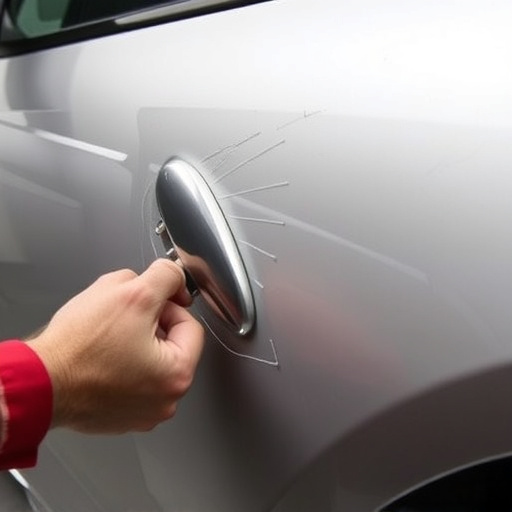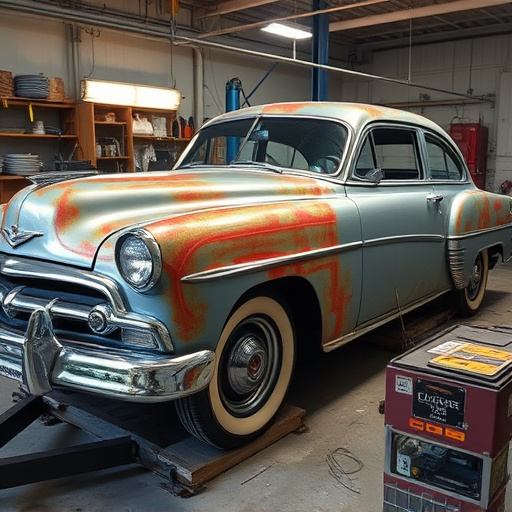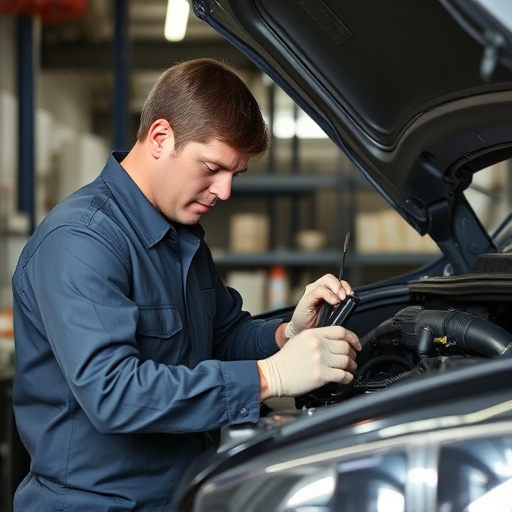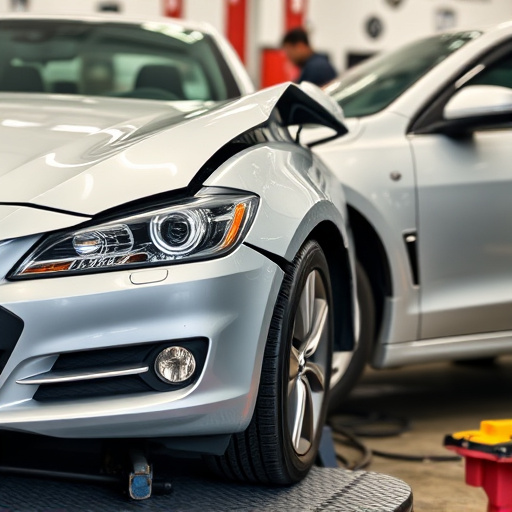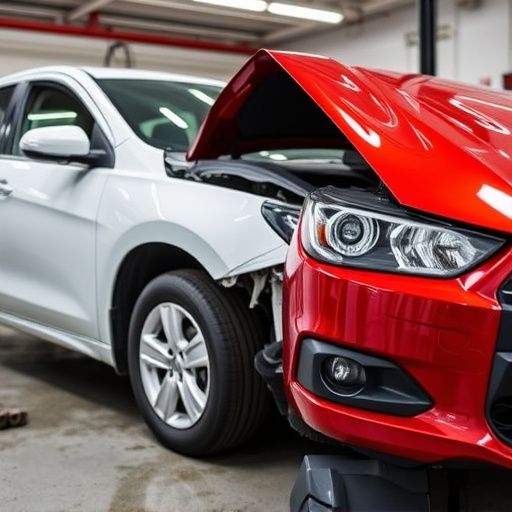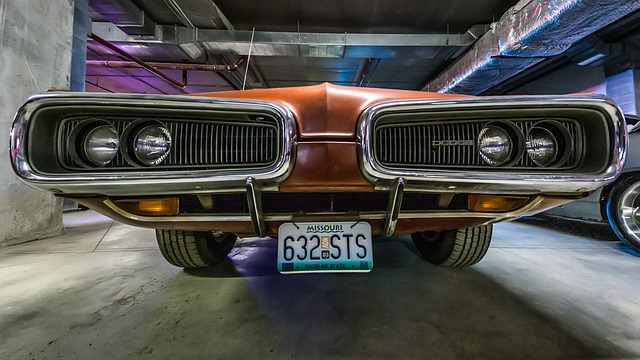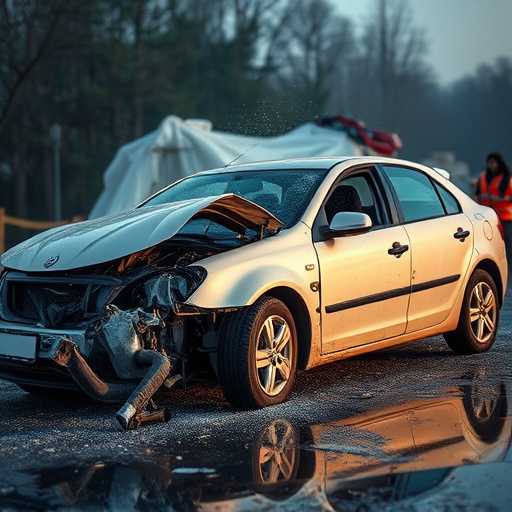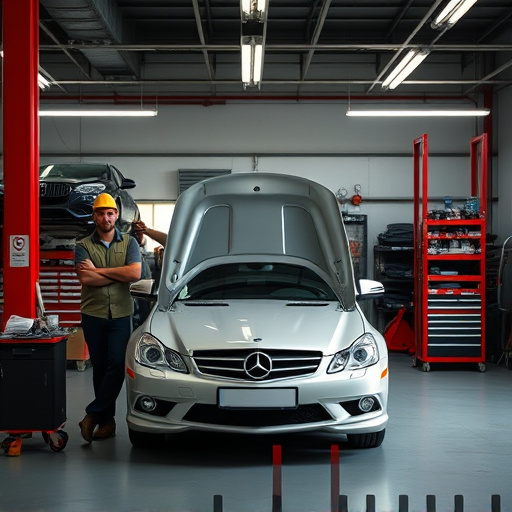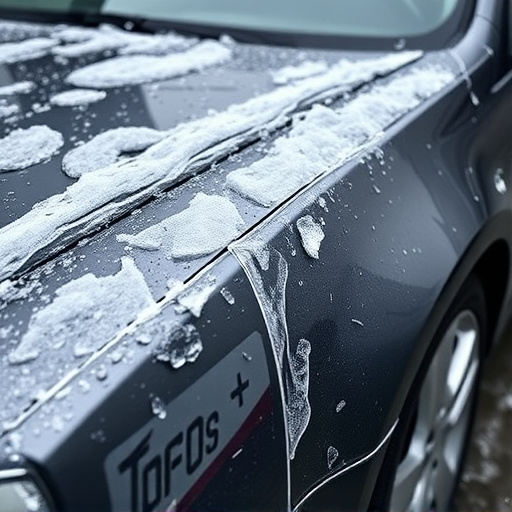Repair craftsmanship quality is vital for automotive safety compliance, encompassing skills, detail, best practices, and high-quality materials. Skilled technicians restore vehicle components, preserving structural integrity and safety features. Reputable shops invest in training, adhering to standards, using advanced tools, PPE, and standardized procedures to mitigate hazards and ensure top-tier restoration services that meet industry developments.
In today’s world, where safety is paramount, understanding the intricate link between repair craftsmanship quality and compliance with safety standards is essential. Repair Craftsmanship Quality acts as a robust foundation, ensuring that repairs are not just functional but also meet stringent safety criteria. This article delves into the fundamentals of repair craftsmanship, explores its direct correlation with safety compliance, and provides best practices to maintain superior quality, thereby fostering a safer environment.
- Understanding Repair Craftsmanship Quality Fundamentals
- The Link Between Craftsmanship and Safety Compliance
- Best Practices for Ensuring Quality Meets Standards
Understanding Repair Craftsmanship Quality Fundamentals

Repair craftsmanship quality is a cornerstone of ensuring safety compliance in various industries, particularly automotive sectors like car repair services and auto glass repair. It involves a set of fundamental practices aimed at delivering precise, reliable, and safe repairs that meet or exceed industry standards. These fundamentals encompass skill proficiency, meticulous attention to detail, adherence to best practices, and the use of high-quality materials—all crucial aspects for achieving top-notch repair craftsmanship quality.
For instance, in car body restoration, a skilled craftsman must possess expertise in metalworking, painting techniques, and an eye for precision to match original factory finishes. This level of proficiency not only ensures the aesthetic appeal of the restored vehicle but also plays a vital role in structural integrity and safety. The same attention to detail applies to auto glass repair, where precise cutting, sealing, and alignment are essential to maintain optimal visibility and protect occupants from potential hazards on the road.
The Link Between Craftsmanship and Safety Compliance

The quality of repair craftsmanship is intrinsically linked to safety compliance in the automotive industry, especially for fleet repair services and autobody repairs. When a vehicle undergoes bodywork services, skilled technicians ensure that each component is meticulously mended or replaced, adhering to strict industry standards. This meticulous approach not only preserves the structural integrity of the vehicle but also ensures that all safety features are restored to their optimal functioning.
Reputable repair shops invest in training their staff to maintain high craftsmanship standards, which translates into safer vehicles on the road. Proper alignment, precise panel fitting, and careful use of materials during autobody repairs prevent potential hazards like loose parts, poor visibility, or compromised crash protection. This attention to detail is vital, as subpar workmanship can lead to long-term safety risks, affecting not only individual drivers but also the overall safety of communities sharing the road with them.
Best Practices for Ensuring Quality Meets Standards

Maintaining high repair craftsmanship quality is paramount to ensuring compliance with safety standards in automotive repair and restoration services. To achieve this, several best practices can be implemented. Firstly, establishing a comprehensive quality control (QC) process that includes regular inspections at every stage of the repair or restoration work guarantees adherence to set standards. This involves using advanced tools and equipment for precise measurements and meticulous attention to detail.
Additionally, investing in well-trained and experienced technicians is key. They should be adept at following safety protocols and industry best practices, such as using personal protective equipment (PPE) and ensuring proper disposal of hazardous materials. Standardized operating procedures (SOPs) that outline step-by-step repair processes also play a crucial role in maintaining consistency and quality across all body shop services. Regular reviews and updates to these SOPs based on new industry standards or technological advancements are essential for staying compliant and delivering top-notch automotive restoration services.
Repair craftsmanship quality is not just about fixing things; it’s about ensuring safety and compliance. By understanding the fundamentals, recognizing the link between skilled work and safety, and adopting best practices, we can create a more secure environment. Investing in high-quality repair craftsmanship isn’t just smart; it’s essential for maintaining standards and protecting lives.
